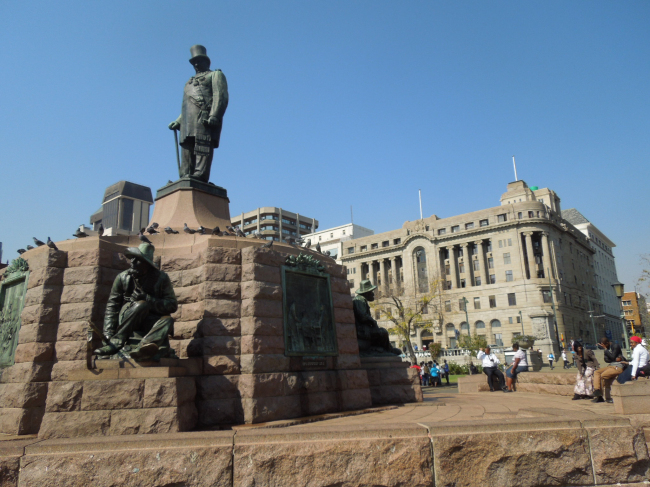Tuesday, June 18, 2013
0619-A brief tale of two cities
Just a short drive from O.R. Tambo International Airport, South Africa’s administrative capital of Pretoria is bound to feature early on the itinerary of many Korean visitors. Packed with history, it is a city that encapsulates much of the striking clash of native African and European cultures that defines South Africa. We checked in at the cozy but upscale 131 Herbert Baker, situated on the street of the same name christened after the famous English architect, before enjoying a hearty steak lunch at nearby Blue Cane Restaurant, named after the national bird that resides in the Austin Roberts Bird Sanctuary on the same grounds.
Appetites stated, we headed to Union Buildings, the seat of government and the site of Nelson Mandela’s historic swearing in as South Africa’s first democratically elected president. The buildings, designed by English architect Sir Herbert Barker using Edwardian and Dutch influences, were completed in 1913. The complex itself was unfortunately closed to visitors, as is routine, but the surrounding tiered gardens made for a pleasant walk. From here, too, we could take in a wonderful view of the Pretoria skyline, an uneven cluster of pinks, tans, blue-grays and silvers against a backdrop of sloping hills.
Just outside the city, we learned about a revered episode of Afrikaans history at the Voortrekker Monument. A distinctive piece of architecture unlike anything in Korea, the building is dedicated to the Battle of Blood River of 1838 in which 400 Afrikaners fought off 2,000 Zulus without a single death to their side.
Then we traveled to Church Square, the historic center and heart of the city, where we soaked in the fast and slowed-paced lives of everyday South Africans. At one moment, one could observe lawyers in full English-style gowns hurried to lunch during recess, at the next, dozens of locals sprawled on the grass enjoying the midday sun. The square has a wealth of colonial buildings of historical interest, including the old parliament building and the court that found Nelson Mandela guilty on the charges of treason that would see him spend the next 27 years of his life in prison. At the center of square stands a statue the top-hated figure of Paul Kruger, the last president of the Boer-ruled South African Republic. Just off the square, you’ll find Café Riche, Pretoria’s oldest pub and a good place for a slap up meal.
Cape Town, South Africa’s legislative capital and its center of tourism, is a city of altogether more European sensibilities, reflecting waves of Dutch, English, French, German and Portuguese immigration. We stayed at the colorfully modern African Pride 15 on Orange Hotel, suited in the imposing shadow of the immense Table Mountain. Just a few minute’s walk way is Company’s Garden, a park founded by the early Europeans settlers and home to a national library, gallery and museum. Strolling through the park, squirrels scurried at our feet without a trace fear.
Cape Town is renowned for its natural beauty, and a trip out of the city was a must. On a gloriously sunny afternoon, we took the Southern Line commuter train to picture perfect Kalk Bay, a palm tree-lined seaside village crammed with craft and antique shops. The red-brick Kalk Bay Trading Post was especially charming, selling all manner of antiques and knick knacks from bygone eras, including old comics, coins, maps, soft drink fridges and more.
From there we took the train to Simon’s Town, home to the South African Navy and last urban area before the Cape of Good Hope, the most south-westerly point of Africa, and the headland of Cape Point. The view of the vast expanse of Atlantic Ocean from the lighthouse at Cape Point was an awe-inspiring sight.
By John Power
